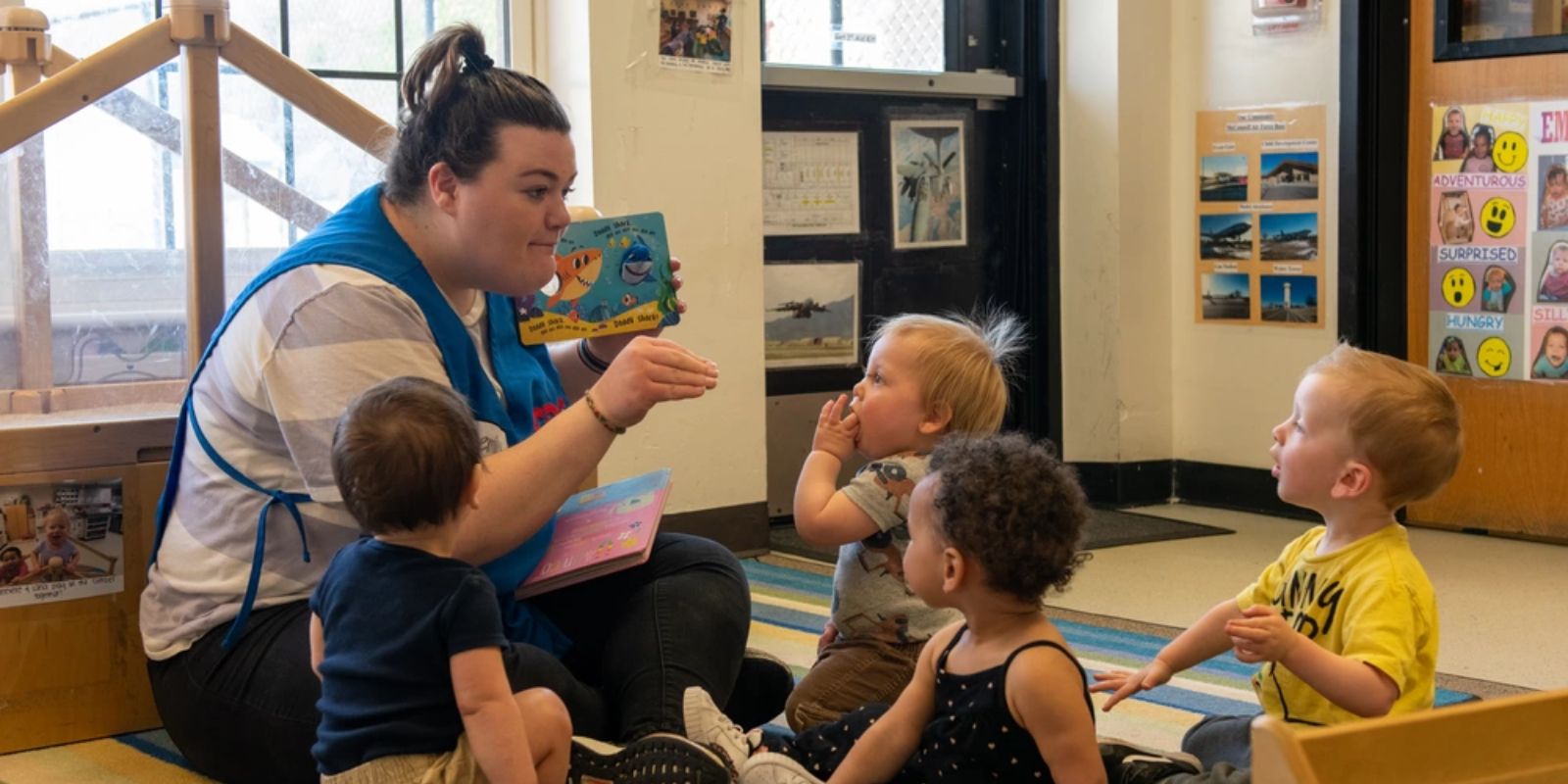DUAL MILITARY COUPLES: BALANCING SERVICE AND FAMILY

ADVERTISEMENT
Two alarm clocks. Two chains of command. One toddler who doesn’t care about either. Dual-military life isn’t an edge case anymore—it’s a growing slice of the force, with nearly 1 in 14 married active-duty service members married to another service member. That’s tens of thousands of families navigating co-location, deployments, duty rosters, and child care—often simultaneously.
Key takeaway: Dual-military life now affects tens of thousands, making synchronized support systems essential for readiness and family well-being.
Military Family Policies: Current Landscape 2023
Nobody Prepared You for Military Life
But we can help. Join over 100k spouses already getting the specific advice, resources, and military tea they need to thrive.
Co-Location is Possible, But Not Always Guaranteed
Each Service runs a joint-spouse pathway, such as the Army’s Married Army Couples Program, to help station spouses together or within commuting distance. In reality, it’s a consideration, not a promise. Recent DoD IG findings indicate that most same-service dual-military spouses are co-located, whereas interservice couples face more challenges.
Parental Leave is More Comprehensive and Handled on an Individual Basis
Since January 2023, every qualifying parent—birth, non-birth, adoptive, or long-term foster—receives 12 weeks of military parental leave. For dual-military couples, leave can’t be pooled or transferred. Units must plan for two separate leave periods when both parents serve.
Postpartum Operational Protections Help Manage Both Careers
Across the Services, birthparents can defer deployments or some assignments for up to 12 months postpartum—a critical buffer for dual-military parents. Service policies vary, so please check your branch’s specific details.
ADVERTISEMENT
Family Care Plans Are Mandatory—And Must Be Real
A valid plan—naming primary and alternate caregivers, along with notarized consents and logistics—remains a non-negotiable requirement for dual-military families.
Don’t shelf it: update annually and anytime your situation changes.
Key takeaway: Extended waitlists and limited hours severely challenge dual-military families; early action and backup plans are critical.
Military Childcare Challenges for Dual Service Members
Solutions for Dual Military Family Challenges
MCCYN (fee assistance). If you can’t access installation care due to distance or waitlists, MCCYN offsets part of your community child care bill. Apply via MilitaryChildCare.com and/or your Service portal.
The Child Care in Your Home (CCYH) pilot helps families, where available. The DoD pilot helps offset the cost of in-home care—a necessity for shift work and caring for infants. Program administration moved in late 2024; check your current eligibility and locations.
Services are working to reduce waitlists, but progress varies widely by installation. Always verify local options and plan backup solutions.
Pro tip: When you submit care requests on MilitaryChildCare.com, track the Anticipated Placement Time (APT)—a rolling estimate that’s more useful than a static “number on the list.”
Key takeaway: Assignment synchronization is complex—start paperwork early, escalate concerns, and be familiar with both Services’ processes.
ADVERTISEMENT
Dual Military Assignments: Career Coordination Strategies
If you have an EFMP enrollment, standardization efforts since 2023 aim to make medical/education needs more visible during assignment coordination.
The Navy has also moved to centralize EFMP for a smoother PCS experience. Learn the new rules; they can protect both the mission and your family.
Key takeaway: Structured routines, proactive planning, and clear communication are essential for daily resilience in dual-military households.
Ops Tempo & Daily Life: Where the Rubber Meets the Road
Deconflicting leave is key. With non-transferable parental leave, both parents’ commanders must plan for two absences. Request staggered windows that are aligned with the mission and document the plans.
Field and deployment realities remain tough. Postpartum protections help, but training rotations and ship time often conflict with family schedules. Know your Service’s lactation, field-training, and postpartum policies; some units restrict field events when accommodations aren’t possible for up to 12 months.
Effective Resources for Dual Military Couples
- Enroll/refresh your MACP or branch join-spouse program as soon as you are eligible; confirm that both personnel records accurately reflect your marriage status and program codes.
- Build a “living” Family Care Plan—primary & alternate caregivers, POAs, medical consents, contingencies for overnights and TDYs; review semiannually, not just annually.
- File parental leave requests early and coordinate staggered windows with both commands. Remember that leave is per parent and cannot be combined.
- Get on child care waitlists on day one (PCS orders in hand)—and apply for MCCYN/fee assistance as a parallel track. Track your APT and keep documentation.
- If EFMP applies, enroll early and learn your Service’s assignment-coordination pipelines (and any new centralized processes).
- Agree on a home “duty-officer” model—who is primary for pickups, sick days, and after-hours calls this week? Put it in writing; shift weekly.
- Practice red-celling your calendar—identify the next 90-day friction points (TDY overlaps, gate exams, PCS report dates) and pre-mitigate with commanders.
Key takeaway: Effective policies drive retention and readiness; gaps in support result in talent loss and readiness shortfalls.
ADVERTISEMENT
Military Readiness Impacts of Dual Service Families
What to Watch Next:
- Child care hiring & pay reforms. Hill and GAO pressure is pushing Services to retain CDC staff and cut waitlists—locals could see incremental gains.
- EFMP standardization rollout. As Services align to DoD policy, expect tweaks to medical screening, case management, and assignment coordination.
- Cross-Service co-location oversight. Continued IG attention may drive stronger guardrails for interservice couples.
You chose each other and the mission. When policies align with reality—encompassing quality child care, genuine postpartum protections, and dependable co-location—dual-military families thrive, and so does the force. Your ability to serve together strengthens families and national readiness.
Two oaths. One family. Still in the fight—together.
Quick Resources
- Join-spouse/MACP (Army): program details and joint-domicile guidance.
- Parental Leave (MPLP): DoD policy explainer.
- Family Care Plans: DoDI 1342.19 & Service forms.
- Child care: MilitaryChildCare.com, MCCYN fee assistance, CCYH pilot.
- EFMP: DoD standardization & Service updates.
Note: Policies are subject to change; always verify with your unit and official Service guidance before taking action.
Suggested reads:

Veteran & Senior Contributor, Military News
BY NATALIE OLIVERIO
Navy Veteran
Natalie Oliverio is a Navy Veteran, journalist, and entrepreneur whose reporting brings clarity, compassion, and credibility to stories that matter most to military families. With more than 100 published articles, she has become a trusted voice on defense policy, family life, and issues shaping the ...
Credentials
- Navy Veteran
- 100+ published articles
- Veterati Mentor
- Travis Manion Foundation Mentor
- Journalist and entrepreneur
Expertise
ADVERTISEMENT
ADVERTISEMENT



